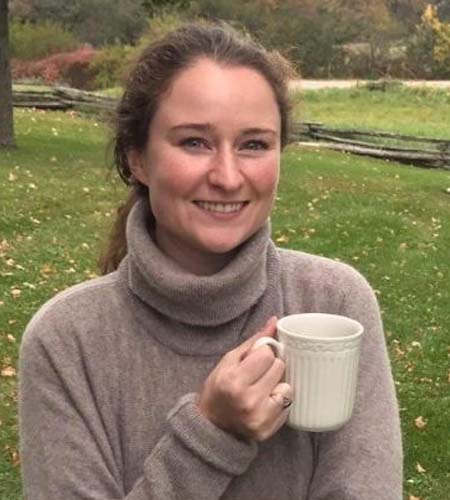Issue Archive
Double Trauma: Post-Migration Living Distress and Refugee Suicidality

Phoebe Lewis
Section Editor: Antonella Bariani
Peer Reviewers: Molly Becker
The United Nations High Commissioner for Refugees (UNHCR, 2023) estimates that, as of mid-2022, 32.5 million people were of refugee status. According to the Immigration and Nationality Act (INA), a person meets the legal definition of refugee if they are “unable or unwilling to return to their country or nationality” due to fears or experience of persecution based on religion, political affiliation, social membership, race, nationality, or religion (INA, section 101(a)(42)). To be granted refugee status, people must apply from outside the desired country, and, according to United States criteria, must not be “firmly resettled” in another country (U.S. Citizenship and Immigration Services [USCIS], 2022). Those seeking asylum must meet the same legal definition as those seeking refugee status; however, they apply from inside the new country. People of refugee status and those seeking asylum are often the most vulnerable members of their new society (UNHCR, 2021). As the number of displaced people around the world rises, it is vital to support the expansion of literature and knowledge concerning this population.
Displaced and resettled populations are vulnerable to post-migration living difficulties (PMLD; Silove, 1998). PMLD refers to daily stressors that resettled people may face, such as language barriers, cultural differences, new legal and bureaucratic systems, loneliness, and boredom (Teodorescu et al., 2012). A growing body of research has identified the role of PMLD in refugee mental health, and, relevant to this paper, its relationship with suicidality (Aisik-Reebs et al., 2022). This paper examines the function of PMLD from the IPTS framework. It asserts that expanding our knowledge of the role of PMLD in the emergence of suicidality could support risk assessment, and thus appropriate intervention planning, with displaced populations.
PMLD in Context
The experience of forced displacement is stressful and traumatic and often follows war, persecution, and significant loss. Refugees have been found to frequently meet higher rates of post-traumatic stress disorder (PTSD) and mood disorders (Malm, 2020). A significant element of the refugee experience is post-migration, a liminal time between places as some people may spend decades in camps that have poor infrastructure and security (Devictor & Do, 2017). Post-migration stressors have been identified as a factor in suicidality in refugee populations, yet there is relatively limited research on this topic; this may be due to difficulties researching transient groups, as well as the cultural, ethnic, and racial heterogeneity of refugee communities (Cogo et al., 2022).
“Double Trauma”
PMLD has been described as a “double trauma,” in that compounding stress inherent to resettlement may exacerbate pre-existing psychological distress (Teodorescu et al., 2012). Difficulties associated with adapting to and navigating a new country may be experienced as equally – or even more – stressful than experiences associated with the initial dislocation (Schick et al., 2018). In a three-year longitudinal study, PMLD was found to mediate rates of anxiety and depression more than previous trauma histories; this finding prompted the authors to call for interventions directly addressing these sources of PMLD (Schick et al., 2018). In another study of the Rohingya of Myanmar, daily stressors in the environment and demographic factors, more so than trauma histories, were found to predict symptoms of depression. These environmental stressors – which could be considered PMLD though the study took place in a post-emergency setting –partially mediated the relationship between trauma history and symptoms of PTSD (Riley et al., 2017).
PMLD has also been found to play a role in suicidal ideation and behavior in refugee and asylum-seeking populations and has been identified as a risk factor for suicide in these populations (Schick et al., 2018). In a study concerning refugees resettled in unstable urban environments, Aisik-Reebs et al. (2022) found strong associations between PMLD, PTSD, and mood disorders, as well as their co- and multi-morbidity, with the severity of suicidal ideation. The findings are significant for an emphasis on the compounding nature of acculturative environmental stressors. Further, the additive stress of chronic racism, poverty, cultural isolation, and a slow-moving immigration bureaucracy have all been identified as risk factors for suicidal behavior in ethnic and immigrant groups (Silove, 1998). Some have contested this directionality of relationships, suggesting that psychological distress associated with the refugee experience, in general, may contribute to post-migration living difficulties (Hynie, 2018). However, for this paper, the etiology of PMLD is of less concern than its role in overall psychological functioning.
PMLD + Perceived Burdensomeness
The IPTS posits that a contributing factor to the development of suicidal behavior is “perceived burdensomeness,” (PB) or the sense of being a burden to loved ones and that one’s death could bring relief to one’s family and community (Joiner et al., 2009). IPTS argues that the desire for suicide emerges when the concepts of PB and “thwarted belongingness” (TB) – or a sense of social alienation – are present. When the capacity to access and act upon this desire is present, the interaction of those three constructs (PB, TB, and capacity) can contribute to, and indicate, imminent risk (Joiner et al., 2006).
PB has been proposed to be particularly salient to the post-migration experience (Chu et al., 2018). In a study of suicidality in Bhutanese refugee populations placed in America, PB was more strongly associated with suicidal ideation more than TB (Meyerhoff, 2021). The proposed relationship between PB and PMLD, and the contributions of PMLD to the development of PB, is compelling when considering that becoming a refugee involves the loss of professional, familial, and cultural identity and a shift in self-concept. Overnight, people may find themselves experiencing an “unmet need for social competence” in which the skills and knowledge they developed in their home country are less useful, impactful, or respected in the new environment (Van Orden et al., 2010, p. 2). PMLD may challenge hierarchies within a family structure, forcing parents to rely on younger generations for support (Fondacaro, 2014; Schick et al., 2018). Considering their 2021 qualitative study of suicidality in Bhutanese refugees resettled in New England, Meyerhoff (2021) even suggested that PB be included as an individual risk factor for refugee populations. While research in this model concerning PMLD remains relatively nascent, the concept of PB appears culturally and environmentally salient to the refugee experience (Chu et al., 2018).
Hidden Ideators
A better understanding of the relationship between PMLD and suicidality in refugee populations may help guide effective risk assessment. People of refugee status and those belonging to ethnic minority groups may be more likely to endorse the desire to be dead, rather than an active wish to harm or kill themselves (Dadfar et al., 2017). Passive ideation may be more difficult to detect initially, but when it is detected, it is more frequently associated with active attempts (Bommersbach et al., 2022). One hypothesis to explain this association is that refugees are more likely to progress along the suicide continuum undetected, thus receiving reactive, rather than preventative, interventions (Han et al., 2014). Recognizing the significant role of PMLD in the emergence of risk constructs may provide useful insight for clinicians attempting to adapt risk assessment protocols to minority clients.
The use of risk measures is a critical element of suicide prevention, detection, and intervention (Bernet & Roberts, 2012). However, many measures were developed with WEIRD samples and clinicians must consider the cultural, racial, ethnic, and linguistic complexities inherent to working with refugee populations. Some available measures were developed with culturally diverse populations, such as the Cultural Assessment of Risk for Suicide scale (CARS-S; Chu et al., 2013), and others, such as the Wish to be Dead scale (Lester, 2013), assess specifically passive ideation which as noted is often found in refugee and ethnic minority groups. Another tool currently available to clinicians that could be adapted for use in refugee populations is the Interpersonal Needs Questionnaire INQ) which includes subscales measuring PB and “thwarted belongingness” (Van Orden, 2012).
The Post-Migration Living Difficulties checklist, (Silove et al., 1998) assesses the severity of sources of PMLD common to refugee populations. These include but are not limited to access to healthcare, delays in processing immigrant applications, discrimination, communication barriers, poverty, loneliness, restricted access to traditional foods, and adjusting to the weather (Silove et al., 1998). Given growing research connecting PMLD and suicidality in refugee samples, it is important to consider how PMLD could be conceptualized as a specific risk factor to guide clinical decision-making. Specifically, assessing the psychological experience of PB as measured by the subjective severity of PMLD may help clinicians consider how environmental factors manifest in clients’ lives, self-concepts, and histories.

PHOEBE LEWIS, M.S., is a Psy.D. candidate at Antioch University New England. She has trained in pediatric neuropsychology at Dartmouth-Hitchcock Medical Center and in trauma-focused therapies with refugee, asylee, and survivor of torture populations through the University of Vermont’s Connecting Cultures specialty service. Currently, Phoebe conducts research and forensic asylum evaluations through the Connecting Cultures clinic and is a graduate clinician at the University of Vermont Counseling and Psychiatric Services (CAPS). Phoebe lives in Burlington, Vermont where she plans to practice upon graduation.
Citation: Lewis, P. (2023). Double trauma: Post-migration living distress and refugee suicidality. Trauma Psychology News, 18(3), 26-29. https://traumapsychnews.com
